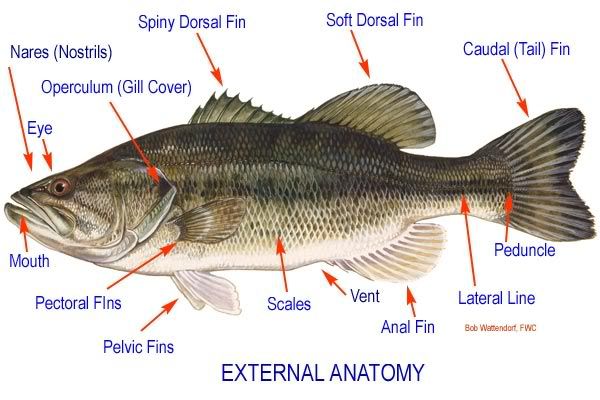Great point Greg. Guys those were very general guidelines for a fertile pond as noted with a goal of keeping in balance. They were not for a trophy LMB or BG pond or an out of balance pond. It is a question of goals and how to use the balance equation to identify and make changes to reach your goals.
Shorty and Eastland if you want to tell us what you have in mind or goals then we can go over how to use the guidelines. If you look at the
http://msucares.com/pubs/publications/p1428.pdf charts on balance you can see how the factors fit together.
Shorty I can't think of a situation off hand where I would cull 5-8in BG for LMB purposes. Possible if goal was trophy BG of 9-12in or if there was no LMB recruitment because of to many BG (even then I would cull the 3in BG not the 8in ones). The last thing any of us want is for someone to take general guidelines from a post and use them and end up damaging their fish population.
Here is some info on length/gape effects on LMB prey. You can use it as follows. Measure the gape sizes of the LMB that you are seeing that you think there are to many of (or skinny ones) , then measure a few BG to get highth (width in study) then you should have the info needed to id the sizes to cull. This is another manipulation of the balance equation to reach specific goals. See below.
Transactions of the American Fisheries Society 1991;120:500–508
Experimental Analysis of Prey Selection by Largemouth Bass: Role of Predator Mouth Width and Prey Body Depth
K. DAVID HAMBRIGHT
Section of Ecology and Systematics and the Ecosystems Research Center, Cornell University, Ithaca, New York 14853, USA
Abstract.—Piscivorous fish are size-selective predators. Although sizes of prey selectively ingested by piscivores traditionally have been measured in terms of prey length relative to predator length, the relationship between prey body depth (measured dorsoventrally) and piscivore mouth gape may be a more appropriate measure of prey size selection. In 2-d feeding trials with three sizes of largemouth bass Micropterus salmoides, I offered various sizes of shallow-bodied fathead minnows Pimephales promelas and deep-bodied pumpkinseeds Lepomis gibbosus in assemblages of one or both species. All sizes of predators preferred pumpkinseeds with body depths well below the maximum size ingestible. Small predators also preferred fathead minnows with body depths below the maximum size ingestible, whereas intermediate and large predators selectively ingested the largest fathead minnows offered. Largemouth bass never ingested prey of body depth greater than their own external mouth width. Although lengths of selectively ingested fathead minnows and pumpkinseeds differed, largemouth bass showed highest preferences for prey of similar body depths regardless of taxonomic identity. These results suggest that, in addition to setting constraints on maximum sizes of prey that can be ingested by piscivores, the relationship between prey body depth and piscivore mouth gape may also be important in selection of prey within the range of ingestible sizes. Therefore, body depth may be more useful than the traditional measure of prey length as a common measure for examining prey selection by gape-limited piscivores over a wide array of prey species.
Preador fish are gape-limited , consuming only prey they can swallow whole. Because prey are generally swallowed head- or tailfirst,their body depth (measured dorsoventrally) relative to the size of a piscivore's mouth determines whether they can be ingested . Thus, in any particular habitat preywith boidy depths greater than the largest piscivore gape are invulnerable to ingestion. The vulnerability of prey within the range of ingestible sizesis determined by other factors such as size distributions of piscivores and prey, prey encounter rates with piscivores, and predator-avoidance behaviorsof prey . Prey-selection behavior of piscivores also influences the vulnerability of prey. Optimal foraging theory postulates that predators maximize the ratiobetween the benefits gained and the costs incurred in obtaining prey. Obviously, the benefits gained increase as a function of prey size, but cost,in particular that due to handling time, also increases rapidly with prey size .
External mouth width (measured with mouth closed as the distance between the outer edges of the maxillary bones just beneath the eyes) was used because they were found that it was a good estimate of the distance between the cleithrum bones, which limit maximum sizes of prey consumed by largemouth bass. Prey body depth (BD, measured as the linear distance from the base of the pelvic girdle to the dorsal ridge)
